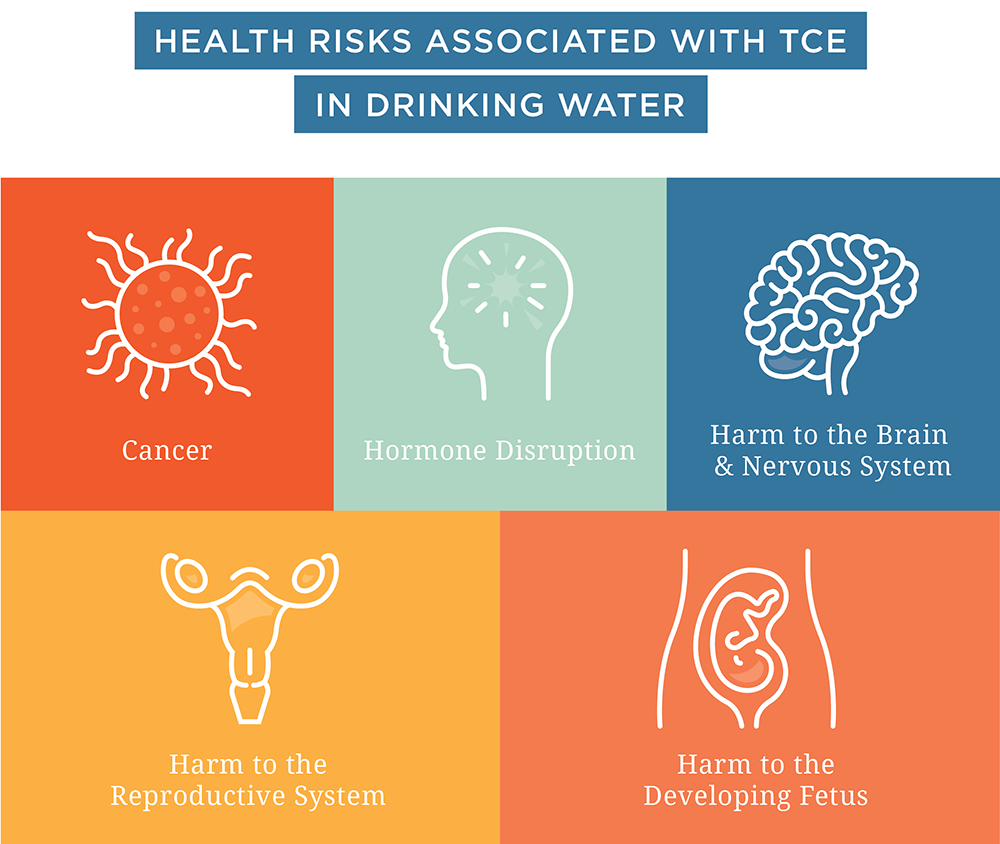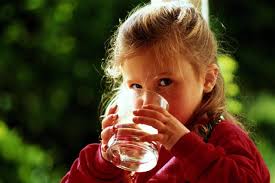Carcinogen Pollutes Mountain Home AFB Tap Water Supplies

In 2015, the latest year for which comprehensive data are available, TCE was detected in EPA-mandated tests by 321 public water systems in 36 states. EWG’s Tap Water Database, which aggregates test results from utilities nationwide, shows that in about half of those systems, average annual levels of TCE were above what some health authorities say is safe for infants and developing fetuses. EWG’s interactive map shows the location of all systems with TCE contamination in 2015.
Mountain Home Air Force Base
- Population served: 6,500
- TCE average: 0.58 ppb
In June 2018, the EPA released so-called problem formulation documents that refine the scope of the risk evaluations for the first batch of chemicals, including TCE, to be assessed under the recently updated TSCA law. But for TCE and three other chemicals, the EPA excluded key exposures from polluted air, water and soil from the scope of its safety assessments. This approach could dramatically underestimate the total number of Americans who are exposed to TCE and the other chemicals the agency is assessing.
People whose water is polluted with TCE can inhale the chemical during bathing, showering, washing dishes and other everyday activities. The health risk from TCE is greatest for children because of their small size – on a body weight basis, they breathe in more air and drink more water each day than older children or adults.
“The health risk from TCE is greatest for children because of their small size – on a body weight basis, they breathe in more air and drink more water each day than older children or adults.”

Levels of pollutants in the water flowing from customers’ taps fluctuate during the year, so the annual averages shown on EWG map reflect the overall level of concern for TCE contamination in a given water supply. For our calculations, we treated samples reported as “no detection” as having no TCE contamination, even though TCE may have been detected in concentrations below the minimum reporting levels required by the EPA or state agencies.
TCE exposure is particularly harmful during pregnancy and childhood. TCE exposure during pregnancy has been linked with heart malformations in the fetus. And it’s not just from drinking water: TCE volatizes from water into indoor air.
Don’t Wait For Government Action – Protect Your Family
The EPA should include exposures from all TCE uses in its safety assessment, and take immediate steps to protect American workers and communities from this dangerous chemical. The EPA should also establish a new federal drinking water standard for TCE at a level that would protect children’s health. Getting government action can take time. Treating a single TCE-contaminated water source can cost between $100,000 and $200,000 a year. For a water utility, the costs add up quickly, because TCE-removing treatment may be needed at multiple wells, and the level of TCE in a well may rise as the contaminated groundwater plume spreads. Full remediation of contaminated groundwater and installation of modern water treatment plants that can tackle contamination in the long term can cost tens or hundreds of millions of dollars.Many people – especially pregnant women and families with infants or small children – may not want to wait until their public water system installs TCE treatment.
Test and Treat at Home
TCE contamination of tap water can be remedied. Granular activated carbon and air stripping or aeration are the two most common approaches for removing TCE. But it’s expensive and the cost depends on how much the source water is contaminated and the treatment method used.
As an immediate, in-home solution, TCE can be removed from tap water with an inexpensive carbon-based filter. Minnesota health officials also recommend ventilating indoor air while bathing/showering, cooking, and while running the dishwasher or washing machine as an effective way to reduce the amounts of TCE in indoor air.
Well Water Doesn’t Make You Safer
TCE is also a serious health concern for those who depend on private wells for their drinking water supply. U.S. Geological Survey data from 2006 suggest that almost 3.5 percent of private domestic wells may be at risk of TCE contamination. Because more than 40 million Americans rely on private wells for their water, up to 1.5 million people may be affected. The actual number of private wells with TCE contamination is likely much higher because private wells aren’t tested regularly.

EWG’s advice for families
- If TCE is found in your water, even at levels below the federal legal limit, EWG highly recommends filtering your water. Look for a carbon-based filter that is certified to remove TCE.
- All public water utilities are required to provide consumers with an annual Consumer Confidence Report, but these reports often don’t give the full results of tests for contaminants. You should contact your utility to learn about the full range of the most recent tests for TCE, and ask what the utility is doing to remove TCE from tap water if it is present.
- If TCE is measured in your indoor air, contact your state health department about recommendations for ongoing monitoring or the need for a mitigation system.
- If you have a private well, and suspect any sources of contamination or hear of TCE detections in your area, get your well tested. The This information can be helpful in deciding for which other contaminants, in addition to TCE, you may need to test.
‘A Civil Action’ Carcinogen Pollutes Tap Water Supplies for 14 Million Americans Under Trump, EPA Retreats From Proposed Ban on Key Uses of TCE TUESDAY, JULY 24, 2018
EWG mapped public water systems according to the information available in the EPA’s Safe Drinking Water Information System. The mapped locations may not exactly match the service area. Instead, they are intended to show the general location of a public water system. Information about the size of the population served also comes from the EPA’s Safe Drinking Water Information System.
National Library of Medicine ToxMap lets users look up hazardous and contaminated sites in their communities, and find out which chemicals have been found.
Original Article By Tasha Stoiber, PhD, Senior Scientist and Olga Naidenko, PhD, Senior Science Advisor for Children’s Environmental Health




